Flowers that look like tulips are usually compared to the traditional dutch tulips with their unique shapes and vibrant colors. However, if you cannot grow real tulips, there are many other flowers that resemble tulips that you can grow.
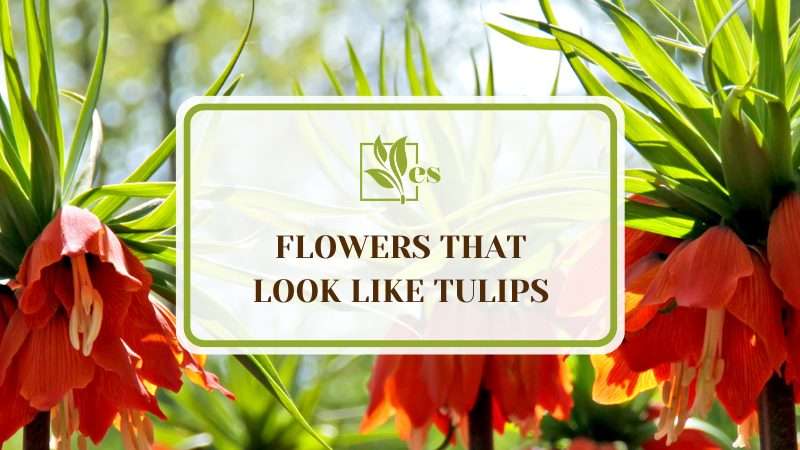
These flowers can grow in different zones all over America, with each showcasing its exceptional beauty. In this complete guide, we will explore these beautiful tulip look-alikes.
JUMP TO TOPIC
Top Flowers That Look Like Tulips
1. Autumn Crocus
Autumn crocus is native to North Africa and Europe. It grows wildly in woodlands and damp meadows and has been naturalized in parts of America and Canada.

– Features
This plant grows upright, with its leaves reaching up to 8 to 14 inches and resembling those of a short, dark, green tulip or a romaine lettuce head. Around three to eight leaves grow out of a bulb-like corm during spring and later go dormant in the early summer.
They bloom in September, producing white to pale purple flowers with a violet or blue center. You can pick fresh blooms to add to a bouquet or put them in a vase. You can also dry them for future use.
– Growing Conditions
Autumn crocus grows well in USDA hardiness zones 5 through 9 and will need protection during the cold season. You can grow them along the streams, in meadows, and at the base of trees.
This plant will grow well in rocky or sandy loam soil with good drainage. They are also able to handle slightly acidic to alkaline soils. Provide it with moderate moisture but avoid overwatering. If you have alkaline soil you should also take into consideration this list of plants.
2. Bell Flower
Bellflower is a herbaceous perennial native to Eastern North America. This flower is known to be a cheery perennial that blooms heavily and vibrantly.
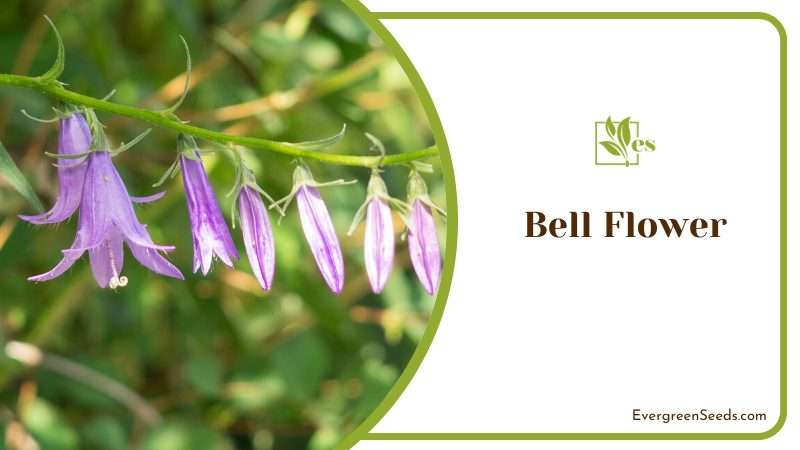
– Common Names
Bellflower is a common flower known by many other names, including willow bell, fairy bells, fairy bellflower, peach bells, petticoat bellflower, and peach-lavender bellflower.
– Features
Bellflowers resemble tulips, and you will likely find them arranged in a beautiful bouquet or vase. Its bright green foliage covers the clusters of blooms, making it an eye-catching sight. The blue petals and white stamens make such a stunning show.
Bellflowers bloom the best in June and July and continue into October with a few flowers. It produces showy white to lavender-blue flowers that are breathtaking.
– Growing Conditions
This plant does well in USDA hardiness zones 3 to 8. They prefer well-drained soils with medium moisture growing under full sun to partial shade. These plants will self-seed when left alone, but they are not invasive. You can divide the clumps every two to four years as needed. You can grow it in perennial borders, open woodlands, or naturalized areas where they can spread well.
3. California Poppy
California poppy is native to the Pacific slope of North America and is the state flower of California. It is a distinct member of the family of poppies and one of the most commonly grown flowers in North America.
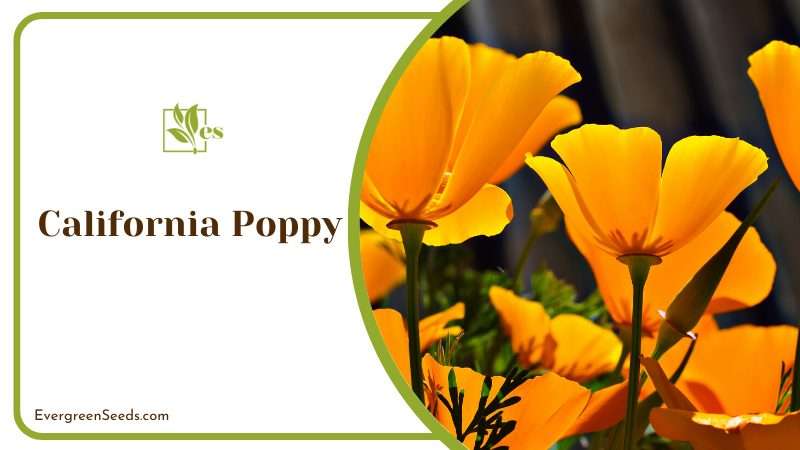
– Features
The leaves are also brightly colored, from green to bronze, with interesting oval shapes. This flower has red, orange, white, and blue petals that bloom from small to large, with long stalks reaching up to two feet tall.
These spring flowers come out overnight, covering large areas with bright, silky petals and green bronze fern-like foliage. They come out in the spring once the weather has warmed up.
– Growing Conditions
California poppy grows best in nutrient–deficient soils. It can grow in both rocky and sandy soils, unlike many other flowering plants that prefer rich, loamy soils. However, avoid heavy clay soil as it will not drain well. You can plant these in a raised bed or a container and water them less often. They are drought tolerant, not needing plenty of water.
4. Carpathian Bellflower
Carpathian Bellflower is a herbaceous perennial from the Campanulaceae family. It is native to Central Europe and grown for its flowers that come back every year. Other names for the Carpathian bellflower include tussock bellflower, Carpathian harebell, or American harebell.
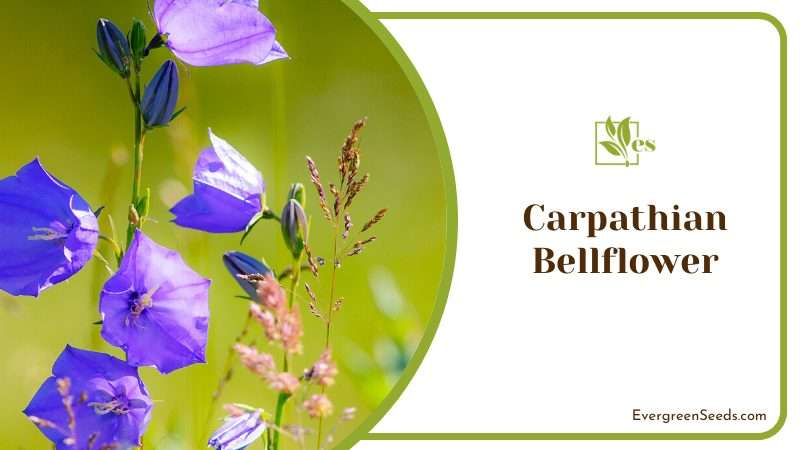
– Features
Carpathian is a low-growing plant with showy blue, purple, or white upward-facing bell-shaped blooms that grow on long stems. They bloom abundantly, reaching about 6 to 12 inches tall and wide.
– Growing Requirements
Plant this flower in full sun to partial shade, sheltering it from the afternoon sun. Provide it with well-drained soils and adequate moisture. Mulch them to keep the roots cool and moist during the dry weather. Divide them every two to four years in spring or late summer so they can maintain their vigor.
5. Crown Imperial
Crown imperial is native to West Asia and the Middle East. It makes a bold statement that plant lovers have appreciated since ancient days.
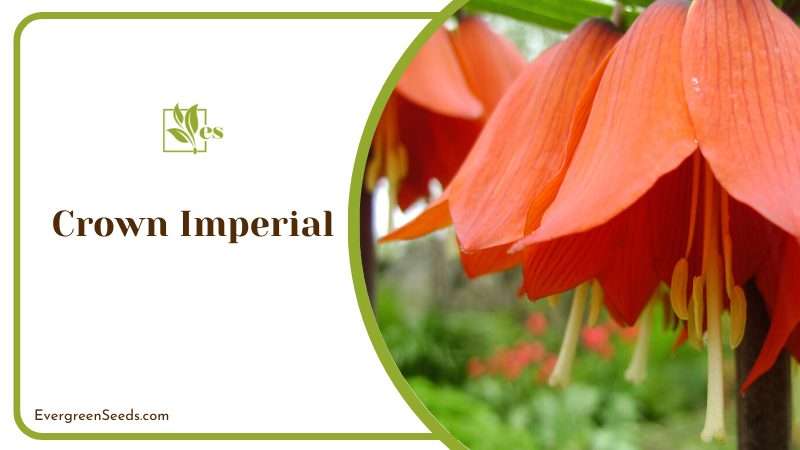
– Features
Crown imperial blooms are crowns on a stalk growing up to three feet tall above the glossy foliage. The bell-shaped pendant flowers come in shades of orange, red, and yellow. They bloom from mid to late spring or April through June and go dormant during summer.
– Growing Conditions
Plant these flowers in the autumn to keep them ready for bloom in the coming spring. They can grow in various soils, from medium loamy to heavy clay, from acidic to neutral or alkaline. Divide the spring bulbs in the fall or spring for the best results.
– Toxicity Caution
This plant is a member of the Fritillaria genus, including toxic plants to humans and animals. Plant them out of reach of children, cats, and dogs to prevent untoward incidents.
6. Daffodils
Daffodils are the most popular spring-flowering bulbs native to North Africa and Europe. Both daffodils and tulips belong to the same genus Liliaceae, which contains many beautiful flowers. They grow from bulbs, with tulip bulbs looking more like ornamental onion.
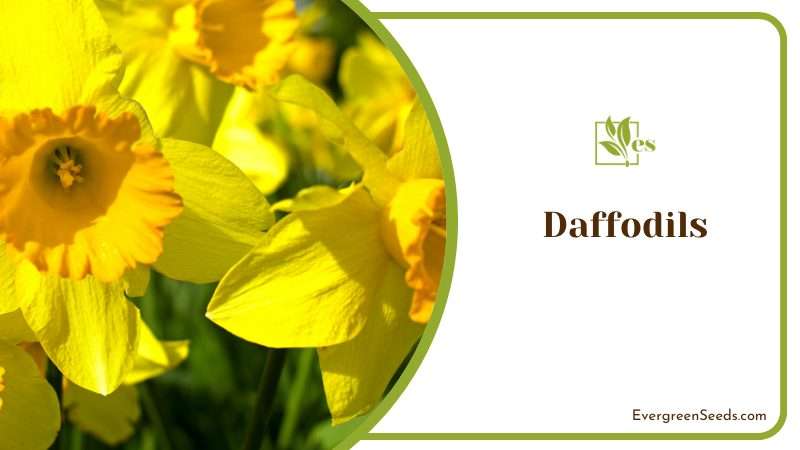
– Features
These perennials have trumpet-shaped blossoms and big bulbous roots, just like tulips. The flowers have six petals and a trumpet in the middle that are bright yellow or white. They flower in the spring after the weather warms up.
– Growing Daffodils
It is easy to grow these flowers as they grow from a bulb, just like onions. Start by planting them in the autumn in moist but well-draining soils. They thrive under full sun and work well with other varieties like primulas, wall flowers, etc.
– Toxicity Caution
All the parts of the daffodil are toxic. They contain a poisonous chemical called lycorine that causes vomiting, abdominal pain, and diarrhea. More severe symptoms include drowsiness, low blood pressure, and liver damage in humans and animals.
7. Fastigiatum
Fastigiatum is a tulip look-alike that has uniquely shaped leaves and flowers. It is a perfect choice for a small landscape, with its texture blending very well into the landscape. It is native to North America and grows widely across many areas in America.
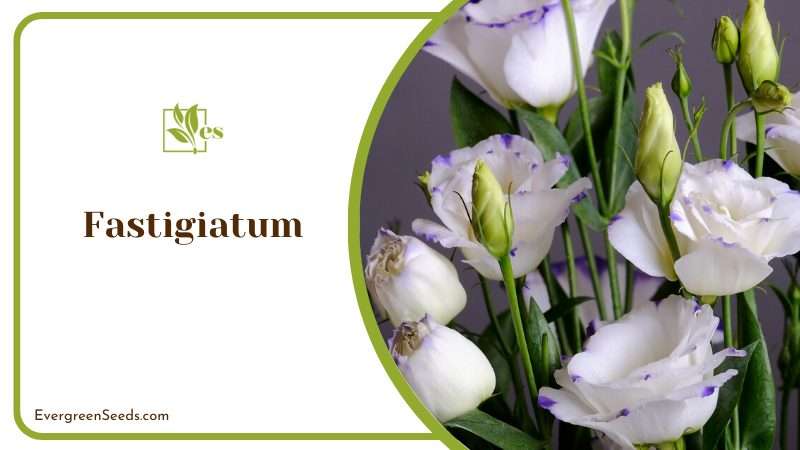
– Features
Fastigiatum has buttery yellow cup-shaped flowers with yellow eyes and orange centers. It has emerald green deciduous foliage with square leaves turning to a striking gold color in the fall. The furrowed gray bark is showy, adding significant winter interest to this plant.
The flowers come out in summer, complementing the beautiful season. This tree will be at least 50 feet tall and 20 feet wide at maturity. It has a high-reaching canopy with a typical five-foot clearance from the ground.
– Growing Requirements
This tree grows at a fast rate under perfect conditions. Grow it in full sunlight and provide it with average, moist conditions. It is not particular about the soil pH but thrives in rich soils. It is tolerant of urban pollution and, therefore, can be grown in the city.
– Care and Maintenance
This tree is high maintenance and requires regular care and upkeep. You will need to prune it in late winter once the cold threat has passed. Keep it free from diseases and insects by providing a clean growing atmosphere.
8. Grape Hyacinth
Grape hyacinth is a perennial bulb native to Southeastern Europe and Asia. It belongs to the Liliaceae family and is not a true hyacinth. Its other name Muscari comes from the Greek word for musk, meaning the scent these flowers produce.
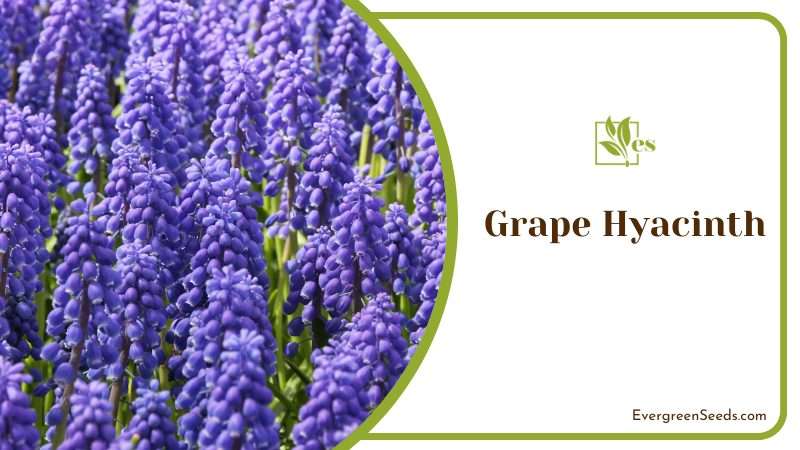
– Features
Muscari armeniacum has bell-shaped cobalt-blue flowers that grow in cluster form and bloom vibrantly. These tight little flowers resemble grapes. It has long, linear, and floppy green leaves that emerge from the ground in early spring, soon followed by the flowers.
The flowers bloom in the spring – April, and May, lasting for about three weeks. The foliage dies back following the flowering in the early spring and early summer. Check out some similar plants to Hyacinth.
– Growing Conditions
Grape hyacinth thrives in USDA hardiness zones 3 to 9. It is best to plant this one in the fall as it persists through mild winters. Plant it in well-drained soils, primarily sandy soils. This plant is not picky about the soil’s pH and will do well in a wide range.
9. Japanese Magnolia
Japanese magnolia is one of the most distinctive tulip-like flowers. It is a deciduous plant that drops its leaves in the winter.
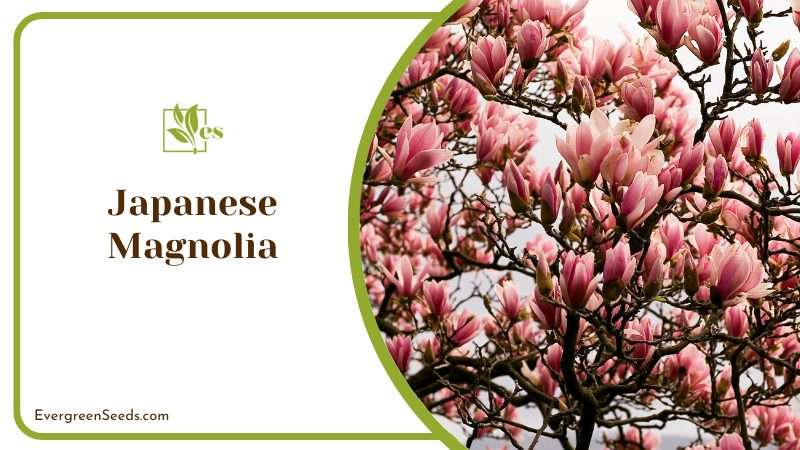
– Features
This tree has large and showy flowers in various colors: lavender-pink, white, dark-reddish purple, rose-purple, and light yellow. These flowers bloom on a leafless tree, making it a beautiful display.
The inner side of the petals is creamy white, while the outer side has the brightest color. The blooms range in size from four to six inches in diameter but can be larger sometimes.
– Growing Conditions
Japanese magnolia grows in USDA hardiness zones 4 through 9. It tolerates clay soils that are constantly moist, and can also grow in well-drained loamy soils that are organically rich. It prefers acidic soils that contain high acidity levels. There are plenty of magnolia trees that grow great in zone 5.
10. Lisianthus
Lisianthus is a genus of about 35 flowering plants belonging to the Gentianaceae family. It is an annual or perennial herb growing at 20 to 80cm tall with opposite leaves and showy flowers. They are native to north central America — all across Mexico to Colorado and Nebraska.
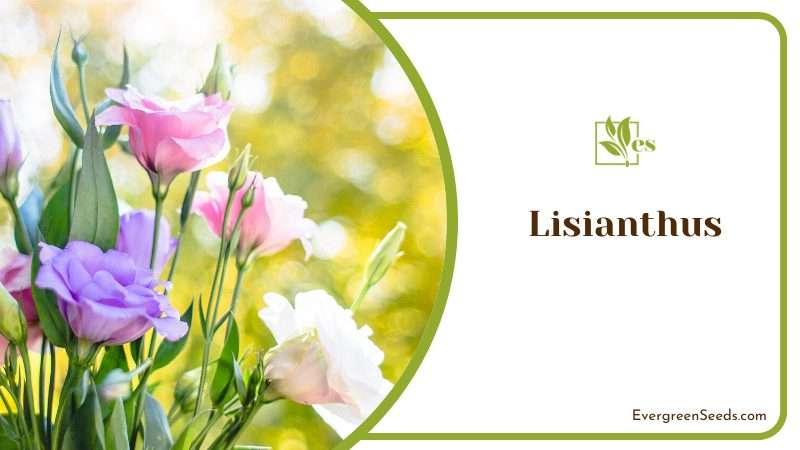
– Features
The lisianthus flowers have a tubular base and spreading petals, commonly blue or purple, although some varieties may have pink, yellow, white, or green colors too. These blooms resemble one of the hybrid tulips known as parrot tulips. These are some long-lasting cut flowers with a vase life of about two weeks.
– Growing Conditions
These plants thrive in USDA hardiness zones 8 to 10 and always come back yearly. Starting this plant from seeds will take a very long time to grow and bloom; therefore, you can start it from existing plants.
Provide it with well-draining soils rich in organic matter like compost, manure, or leaf mold. Water-logged soils will kill the roots of this plant. It tolerates soils between the pH value 6.5 to 7.0 to prevent the yellowing of the leaves.
11. Pasque flower
The Pasque flower is native to Europe and is a buttercup family member. It grows to about 20 inches tall with beautiful flowers that are a favorite of many garden owners.
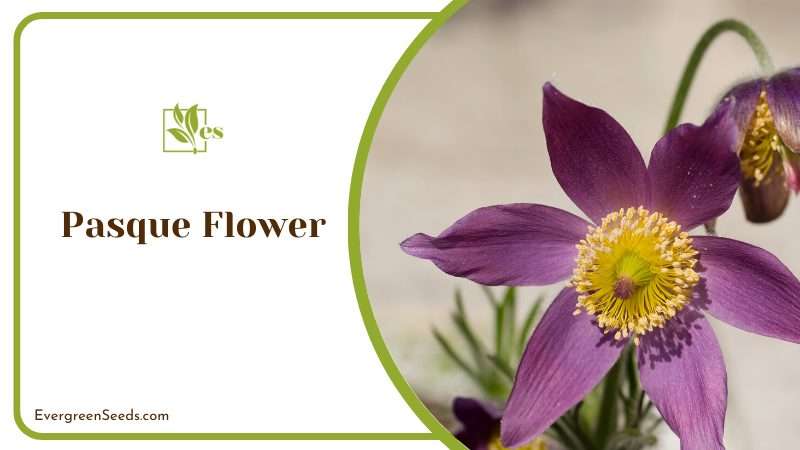
– Features
This flower has six petals and is about an inch wide, just like tulips. The center of the flower has yellow stamens that stand out with their vibrant beauty. They bloom in early spring, mainly before most flowers. Though the flowers look the same, pasque flowers are not actual tulips.
– Growing Conditions
Pasque flowers grow in cold climates and bloom earlier than tulips. Grow them in well-drained soils under full sun. Before division, cut back any open flowers and large buds. The plant will produce new growth and become lush within four weeks.
One mature plant can be subdivided into four new plants. This plant is drought tolerant and will do well in dry soils, but only for a short time.












